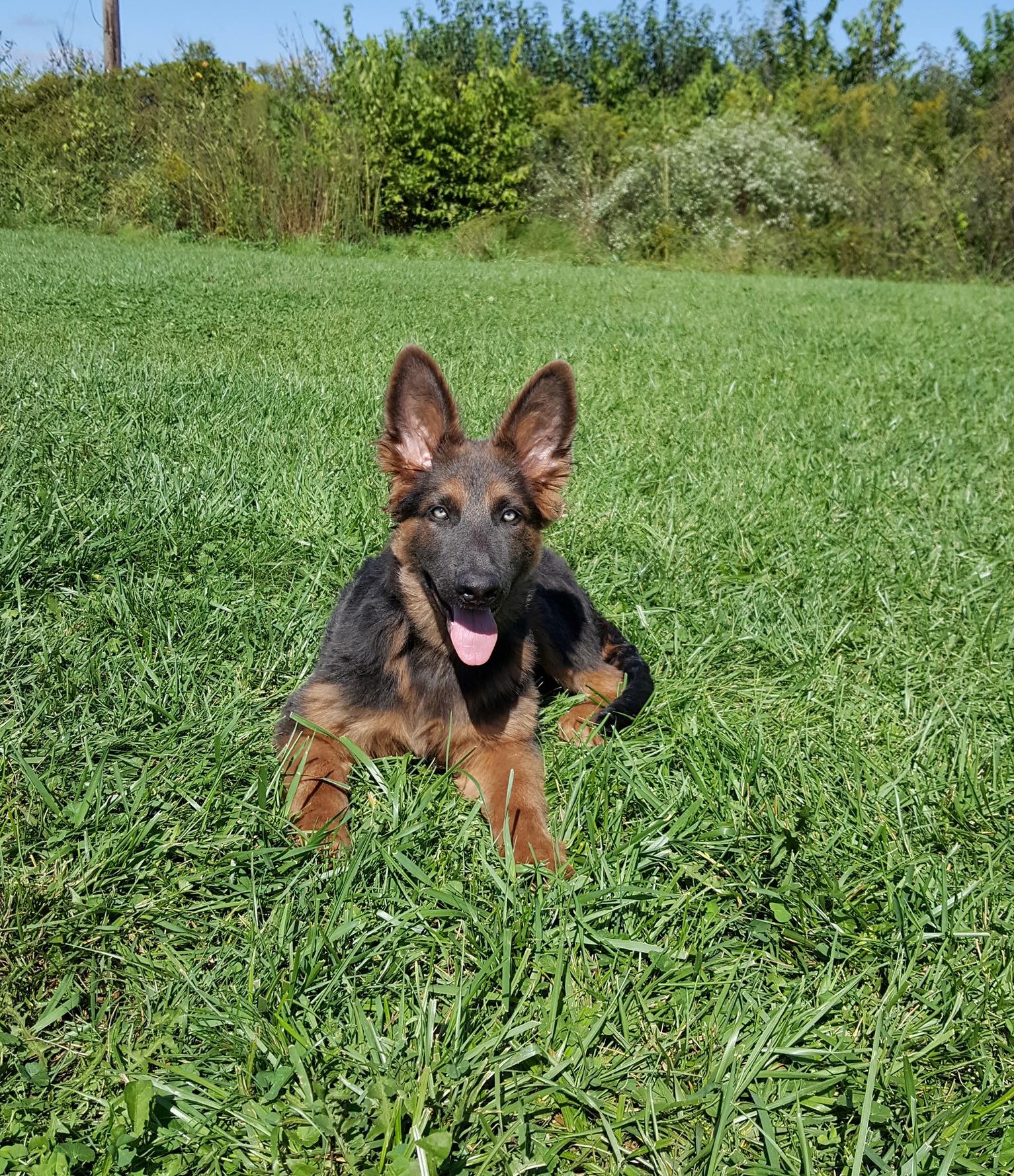Are You Training a Deaf Dog?
Setting the Scene
You’ve just gotten your new puppy and you notice that he isn’t responding to his name. You started off joking that your dog can’t hear and that’s why he isn’t listening. As time moves on you begin to believe that he really can’t hear you! Could you be training a deaf dog? The effects of deafness can be seen as early as 1 to 3 weeks in your puppies' development. The first thing to do would be to determine if there actually is a hearing issue. Unfortunately, we can’t simply ask the dog if they can hear us.
Testing For Hearing Loss in Your Dog
A good test to determine their level of hearing is to make increasingly louder noises just outside of the dog’s field of vision. It is best to make these noises with something like a cell phone which allows you to increase the volume as opposed to banging two objects together. When you bang objects together the objects will cause a vibration which could cause the dog to react even without hearing a sound. This is true if you are clapping your hands, banging pots/pans, or knocking on a door/wall. Watch the dog’s ears as you make the noise, if they twitch or move there is a good chance the dog has some level of hearing. If you suspect that there is hearing loss, you should consult a veterinarian who can run more detailed tests to provide a clear diagnosis of your dog's hearing abilities.
Is Deafness Common in Dogs?
Deafness in dogs is not all that rare. According to the AKC 5 to 10% of dogs suffer from deafness. There are actually 30 breeds that have a disposition for deafness. They include some of the most popular dog breeds; German Shepherds, Boston Terriers and the Cocker Spaniel to name a few. Additionally, much like humans, many dogs will begin to lose their hearing as they age increasing the total number of dogs that have issues with their hearing.
Is Training a Deaf Dog Possible?
Many people ask us if it is even possible to train a dog that is completely deaf. They are surprised when we tell them that it is not all that different than training a dog that has full hearing. The first thing we want to do is establish a method of communication with the dog. Standard obedience hand signals are the method that we have found to work the best because many people will be familiar with them. There are people that advocate using the America Sign Language (ASL) signals instead. While we do not have an issue with this, we typically avoid it. You will find that more people know the standard obedience command for sit rather than the ASL version. Although using hand signals to train a deaf dog is not difficult, there is one large limitation. When using hand signals you have to ensure that the dog can actually see the command. Always make sure that you are in their range of vision when using the hand signals. Believe it or not, that doesn’t mean you need to be in front of them. Much like humans, dogs have great peripheral vision.
You Should Speak When Training a Deaf Dog
In addition to using the hand signal, we always instruct clients to say the command aloud. This seems odd to people, but it helps both the dog and the handler. For the trainer, saying the command makes them feel more comfortable, because it is what they are used to and feel most comfortable with. For dogs with some hearing there is the chance that they will hear part of the command and learn it along with the hand signal. For dogs that are fully deaf, there is still the chance that they are feeling the vibrations from your words. This is similar to how deaf people feel the vibrations of music and find the rhythm of it. Speaking the command gives your dog the best chance to learn an obedience command by giving them every option to learn from everything in the environment around them; body language, vibrations, and the chance of having some hearing.
Using an Electronic Dog Collar in Deaf Dog Training
After teaching the dog how to perform their obedience commands when they see the hand signal, it is time to start working on off leash obedience. An extremely useful tool to use when training a deaf dog is a vibrating collar. This is not a shock collar, but instead a collar that emits only a vibration. We utilize the collar in a manner similar to the way that we get a hearing dog’s attention prior to giving a command. We issue a vibration prior to giving a command with a hand signal which conditions the dog to look to you when requested. This will require a good deal of training before your dog can be free at the dog park and look to you when paged, but it will be invaluable once they start responding to it. See below for the e-collar that we recommend to many deaf dog training clients.
Be Patient when training
When training a deaf dog, the trainer should exhibit more patience than with the average dog. This is not limited to obedience commands. This also refers to the process of socializing the dog. Many deaf dogs are unfairly characterized as skittish or nervous. This often stems from their inability to know what humans want them to do. The main goal when working with a nervous dog, whether they are deaf or not, is to show them that they can trust their handler. Once they trust their handler and determine that their handler would not let harm come to them, we work on helping them through scary situations.
A common situation that leads to fear in deaf dogs is when someone comes up behind them. Some would say that this is a situation that should always be avoided. That being said, no matter how hard you try, some situations cannot be avoided. At some point in time a child or dog will sneak up behind your deaf dog and surprise them. One way we help limit these situations while training is utilizing a crate. It helps give the dog the expectation of where someone will be coming from and the time it takes to open the door gives them a second to realize what is happening. We teach the dog through time and training that people surprising them is something that will happen and they do not need to fear it. The more you work with the dog, the more comfortable they will begin to feel.
Remember, deafness in a dog does not mean that they cannot be trained or live a normal life. It simply means that we need to communicate in a different fashion.
Recommended Products for Training a Deaf Dog?
- This is a bundle of 2 items: Mini Educator - PG-300 and PetsTEK Dog Training Clicker Kit. Perfect for back yards, parks and large fields training.
- This training system has up to a half a mile range and fully waterproof with a remote that will float in the water.
- Use with dogs that are 5 pounds and larger. Featuring 100 levels of adjustable vibration plus tone button for behavior marking. Momentary and Continuous buttons for personalized training. For neck sizes between 6 - 30 inches. Assembled and tested in the USA.
- With help of the clicker, you can teach your dog new behaviors with positive reinforcement. Training clicker comes in assorted colors: black.
- No-shock collar is a perfect collar to train your dog without any static correction.
- Breathable Mesh: Allows air to pass through and moisture to escape to reduce fogging, and water to escape after a swim.
- Spherical Lens: Provides an improved field of view, optical clarity, a wider peripheral vision, and ample room for ventilation and whiskers.
- Durable Frame: Holds up to the wear and tear you can expect from the most active dogs.
- Impact Resistant: Polycarbonate lenses are shatterproof and designed to protect against larger objects that can cause blunt eye trauma and fine particles that can irritate eyes.
- Strap System: The fully adjustable strap system is easy to adjust, allows for increased stability and a full range of motion, and can be tailored-fit to any dog.
- All goggles come with 1 Clear & 1 Smoke Lens and microfiber storage bag.






